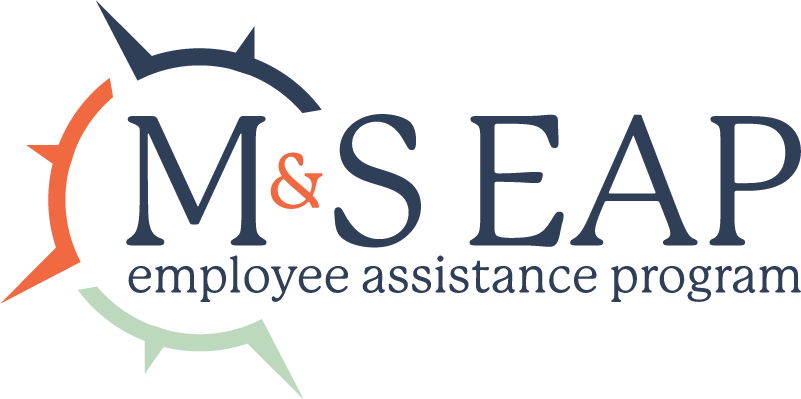Seeing Opportunities in the Midst of Chaos: From the (Virtual) Desk of Chuck Mazzitti

When people suffer loss or are exposed to trauma, we often hear talk about “getting back to normal.” The truth is, you can never completely go back to the way things were. You have to adjust to life as it now is, and that loss or exposure to trauma now becomes part of your life experience. It informs your thoughts and shapes how you react to things. Businesses are no different: they respond to threats and challenges by either adapting to changes or doubling down on what they believe to be their “tried and true” way of operating. The results of embracing the second response are usually not good.
Throughout history, we have seen events occur that are truly game changers. While they may look insignificant at first, their impact on business as usual can be disruptive and devastating. Examples of this include the introduction of the digital camera to rival Kodak’s industry dominance, Netflix mail order movies competing with Blockbuster’s store-based operation, and Amazon selling books online (and then everything else) to the demise of brick and mortar stores. At every turn, the existing businesses doubled down, only to be swept up in a tidal wave of change. We call these events strategic inflection points.
If we are able to see these events as they develop before our eyes, we can analyze them, look to develop strategies to take advantage of these changes, and then implement them. Businesses, like people, rarely see these events as opportunities. They usually see them as threats or annoyances. Two cases illustrate this, and the first one is ironic.
1) The first digital camera was developed by … Kodak’s labs in the 1960s. Kodak ignored this development because they made most of their money processing film.
2) The millennial generation has been part of the workforce since around 2002. Within 5 to 10 years, they will be the largest demographic in the workplace. They think and act differently than previous generations. How have we responded to them? By criticizing them at every turn, as a homogeneous group. They will be running the workplace soon. Have we prepared for that by understanding and utilizing their talents to the fullest? Or are we content to smugly criticize our own kids?
The current pandemic-driven challenges can be viewed as an opportunity in the midst of a crisis. We are being forced to do things differently. How do we provide services in the age of COVID-19? Schools and offices are shuttered, manufacturing plants are closed, and many other businesses are forced to develop work from home strategies or find creative ways to deliver goods and services. I am sure that many of you have felt the urgent need to change your operating systems and staffing contingents.
What opportunities are out there? Some customer markets have been reduced or eliminated. However, there may be new markets that are opening up. Is your business resilient enough to take advantage of these new opportunities? The demand for healthcare supplies is enormous right now. People still need access to goods and services. Amazon and Netflix are ideally positioned for this. What can we learn from them to do the same with our goods and services? If people cannot come to our restaurants and businesses, how can we get our products to them?
In our field, telemedicine has been a slowly evolving trend for years. Because of this virus, utilization of this technology has gone from 4% of the market to more than 90% in certain fields, including training and counseling services. As people get used to using these platforms, I believe that these “new” options will be mainstream long after this current crisis ends. I believe this is a peek into the future.
Working from home requires us to answer some questions so we can provide services and manage staff. What tools do the staff need to do their work from home? How will they communicate? How do we know they are getting an acceptable amount of work done? How do we ensure the quality of the services delivered to our customers and clients? For us, the answers were straightforward: 1) Staff need the ability to answer the phones as if they were in the office; 2) They need to be able to communicate with each other in real time so that requests for services are handled immediately; 3) Staff need clearly defined tasks to accomplish each day, week and month; 4) The staff need to meet deadlines for projects, reporting, and assigned duties; 5) They need to report on the day’s activities to their supervisors; 6) Our network therapists must have the ability to provide virtual therapy; and 7) We need to be able to have video conferenced meetings.
Moving into the future, will work from home be something we can embrace to reduce operating costs and provide more flexibility to our staff and clients? I believe so. A few investments in technology today could alter the face of our operations in the future.
Some business owners I have talked to see opportunities they did not realize existed. Many of us hire additional staff as business demands grow. Over time, Parkinson’s Law creeps in. Parkinson’s Law is the adage that “work expands so as to fill the time available for its completion.” This can lead to bloating and bureaucracy. Because many employers were forced to reduce staff by the current pandemic, some managers are realizing they can provide the same level of service with fewer staff. Others have realized that offsite work can be as accountable and effective as in-office work. As everyone gets more comfortable with video conferencing and “Zoom” type meetings, what percentage of face-to-face contact (and travel) can be replaced with this new option? I can remember going from phone calls to faxes to emails; now we may see a primary operating change from email to video chats. My guess is there will be a place for all of these operational platforms in the future “workplace.” Their usage will depend on situational considerations and effectiveness.
I believe our ability to be resilient and to innovate will be what carries us forward into the next chapter of business in the United States. Those companies and employers who can adapt to the changing realities of our times will survive and then prosper. Those that are structurally built to only do things in a specific, concrete way may not survive. Ignore the current strategic inflection points at your own peril. Try to realize the potential that exists. This will not be easy to do, especially while bailing water as hard and fast as you can to stay afloat.
For some of the best ideas, look outside of your own industry for ideas. If you model what everyone else in your business group is doing, the best you will be is – them. Many times the best practices come from areas you would least expect. I remember going to some professional association meetings during the Great Recession and listening to everyone complain about how bad things were. Maybe that made them all feel better, knowing that misery loves company. It made me decide to stop going to these meetings. I wanted new ideas. Therefore, I looked elsewhere, and I recommend you do the same. I wish you success as we work through this. Our ability to not only survive but also eventually thrive will depend upon what we do now, and the groundwork we lay for the future.
We are about to discover what it is that makes this the greatest country on earth. Or we will find out how far we have fallen from that once universally accepted truth.



